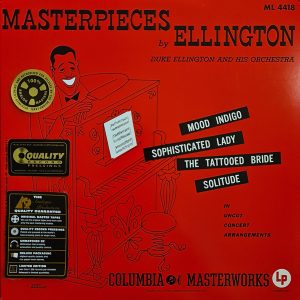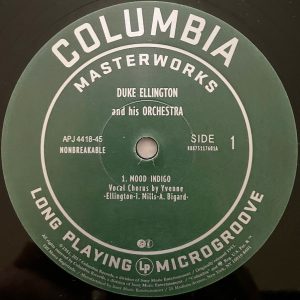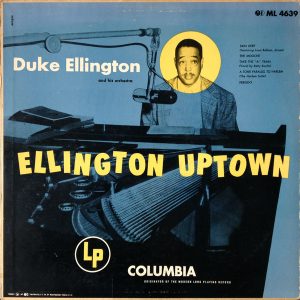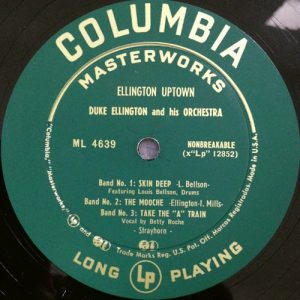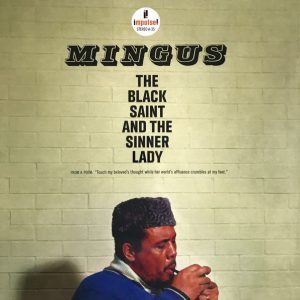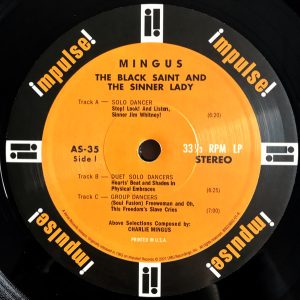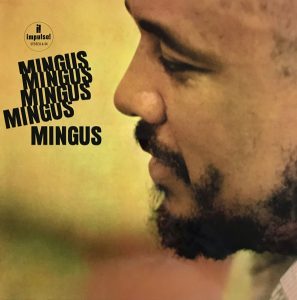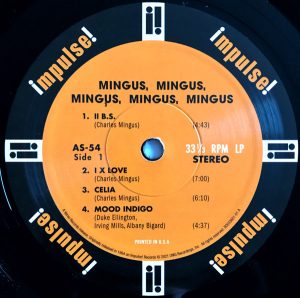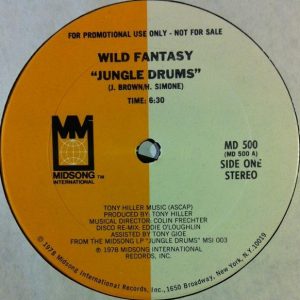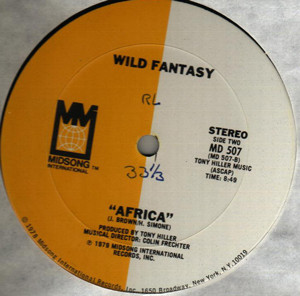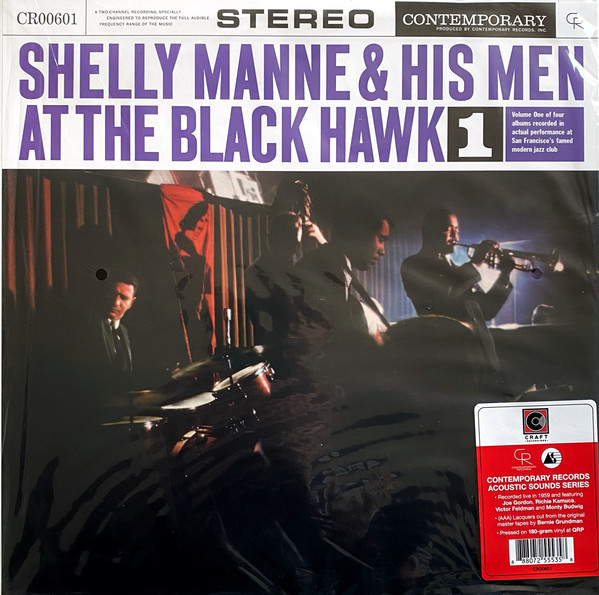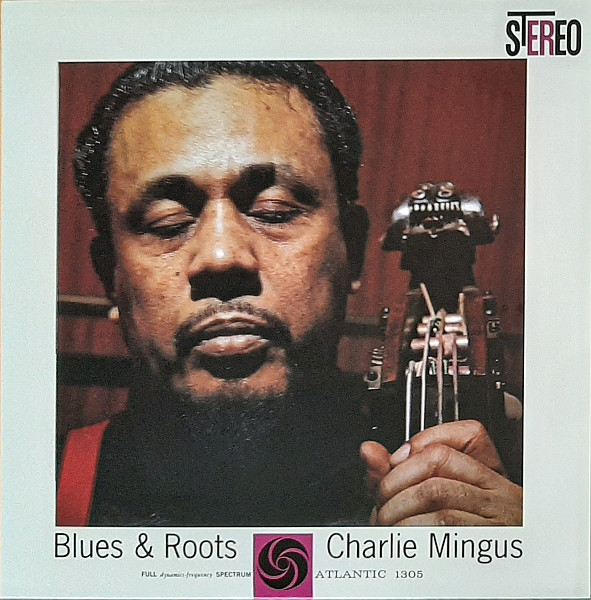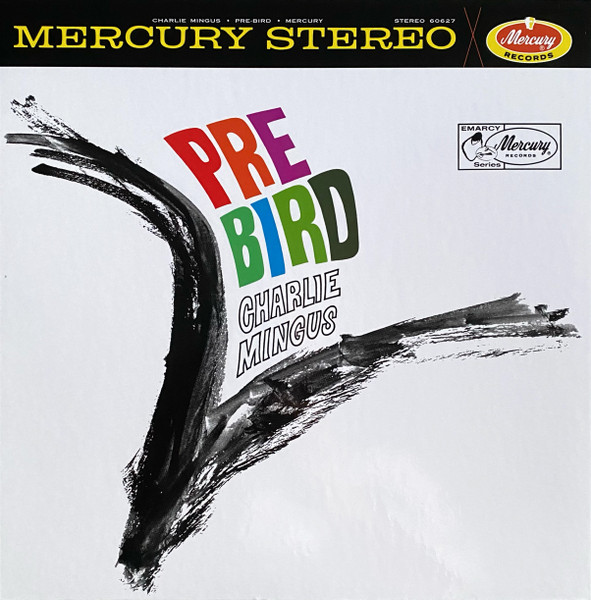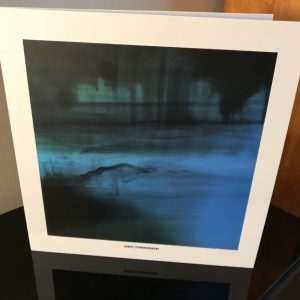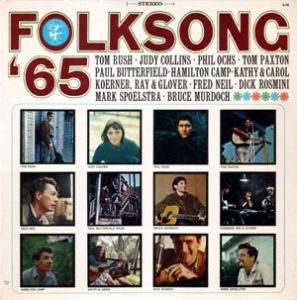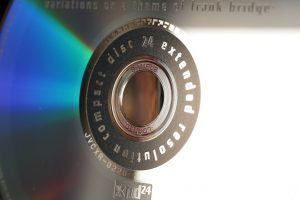This is an ongoing project by Claude Lemaire of Soundevaluations
186. Duke Ellington and his Orchestra, Masterpieces by Ellington. Columbia Masterworks – ML 4418 Mono (1951), Analogue Productions – APJ 4418-45, 200g (2017), 180g (2021), (2x45 rpm). Genre: jazz, swing, orchestral big band.
The title says it all, these are masterpieces by a master of music. I mention the latter rather than a "master of jazz," for these four pieces—and one can certainly include most of the maestro's repertoire—go well beyond the scope of what we normally associate with jazz composition, arrangements, and performances. Yes, you'll hear jazz, swing, and blues intertwine as idyllic ballet dancers performing on stage, but also that of classical music in the form of tone poems and concertos. Merely separated by seven months there is no doubt that George Gershwin made an impact on the Duke—if only by the use of the title of Gershwin's famous 1924 work Rhapsody in Blue, whereas Ellington composed "Creole Rhapsody" in 1931 as well as A Rhapsody of Negro Life featured in the 1935 film Symphony in Black. The reverse could also be said, that in turn Ellington inspired Gershwin; as well as bandleader, pianist, composer, and arranger Stan Kenton. Hence, both men integrated European-influence manuscripts into American mainstream music. Nor should we underestimate the enormous contribution from his decades long collaboration with arranger and classical admirer Billy Strayhorn, who on this album revitalizes three of Duke's earlier works from the 1930s: "Mood Indigo," "Sophisticated Lady," and "Solitude"—all considered jazz standards—plus a fourth composition called "The Tattooed Bride." Originally confined by the three minute or so time limits dictated by the 78 rpm format, here on this four-side 45 rpm album they are given free rein to evolve, explore, and express to their full potential in outstanding sophisticated sound. The changes in tempo, dynamics, and melodic phrasings are phenomenal. Singer Eve Duke aka Yvonne Lanauze lends her voice on the first two tracks while Duke's son Mercer contributes on flugelhorn. Notable band players are Johnny Hodges and Paul Gonsalves on saxes, Harry Carney on baritone sax and bass clarinet, and Sonny Greer on drums. Recorded in beautiful mono on an Ampex 200 at 15 ips in December 1950 by Columbia Records—who only two years prior had released the very first 33 1/3 rpm LP. I have not heard an original pressing but this remastering and 45 rpm cutting by Ryan K. Smith at Sterling Sound in New York, and pressed by QRP in Salina, Kansas is one of the best mono recordings and vinyl transfers I have ever heard. The wide dynamic swings, crisp brassy sound, transparent mids and highs, and stunningly well defined double-bass notes are aided by the extremely silent vinyl noise floor, and surprising low tape hiss. Probably my favorite RKS and QRP combination to date. Bravo!
187. Duke Ellington and his Orchestra, Ellington Uptown. Columbia Masterworks – ML 4639 (mono) (1952), 33 1/3 rpm. Genre: big band swing, cool jazz.
Hot on the heels of Masterpieces, the Duke dusts off his top hat and tuxedo proudly heading for a night Uptown. Plunging full speed ahead with drummer-extraordinaire Louis Bellson belting all out on "Skin Deep." With its swinging cool cat vibe that could serve backdrop as an old spy thriller soundtrack, it kicks into overdrive with a frantic dash unleashed by Bellson's double-bass pounding, predating Black Sabbath's "Iron Man" by nearly two decades. The brass bites with full force while midway Bellson flies solo for a full 3 1/2 minutes nearly 'til the finale. The Ellington sound is on full display through Irving Mills' "The Mooche" which slows things down quite a bit and showcases the jungle style prevalent at The Cotton Club during the late 1920s featuring dissonant clarinets, plus plunger-muted trumpet and trombone growls. Ellington-Strayhorn's signature song and biggest hit "Take the 'A' Train" departs the station under delicate piano precipitation over a light stomping pulse; then the famous brass riff kicks in followed by Betty Roche singing and scatting away. Midway through the tracks the tempo shifts down many gears with the sultry sax and muted trombones flirting in the foggy background giving it a languid blues feel until in the final two minute stretch, the train propels fast forward into Harlem. At nearly fourteen-minutes long, the progressive symphonic jazz piece "A Tone Parallel to Harlem (Harlem Suite)" stands out from the pack for that era and is one of the most ambitious compositions from the master's pen. Initially a commission by Arturo Toscanini for which the famous Italian conductor did not pursue to the end—the myriad contortions in meters, tempo, texture, scales, soloing, and complex arrangements that simply exceeds simple analysis. Again we can observe heavy influence on people like Kenton and television composer-arranger Neal Hefti. The album ends things swinging on lighter material with the Juan Tizol jazz standard "Perdido" in reference to the landmark street in New Orleans. Like the preceding album, no engineering credits are listed, but once again Columbia really knew what they were doing as the sound is mind-boggling impressive regardless of any era. The mono sound is big, bold, bassy, very dynamic, distortion free, and so powerful! I do not have the original US but I'm confident that my Canadian first pressing is representative of the best sonic presentation. Note that Ryan K. Smith remastered and cut it at Sterling Sound for Barnes and Noble in 2016 (Analog Spark ML 4639) but I have not heard it to comment on.
188. Charles Mingus, The Black Saint and the Sinner Lady. Impulse! – AS-35 (1963), Impulse! UME B0033602-01, Acoustic Sound Series (2021), 33 1/3 rpm. Genre: avant-garde jazz, third stream, experimental big band.
It is always a challenge when choosing who is the greatest saxophonist in jazz history—several names readily come to mind. But when it comes to greatest bassist and composer, one name nearly always pops up on top—Charles Mingus. Born in 1922, his life was cut short by ALS at age 56, but he somehow defied this predicament by being highly prolific starting in the mid-1940s up to the mid-1970s, typically releasing three albums per year, and an astonishing eight in 1964 alone. The Black Saint and the Sinner Lady is his first release for ABC/Paramounts' subsidiary, Impulse! Records. Headed at the time by record producer Bob Thiele, the label freed musicians from the usual confines of the music business, and allowed explorations into free jazz and avant-garde circles. Side A is divided into three track movements for easier radio airplay, while side B boasts also three movements but played in one continuous cycle like the composer intended. Accompanied by nearly a dozen musicians from the onset this jazz ballet is deeply imbued by Ellington sophistication and complexity, Kenton-esque third stream grandeur and crushing cacophony, and in some instances, flamenco flavor sonorities—thanks in part to guitarist Jay Berliner. In fact, among them trombonist Quentin Jackson had worked with Ellington and alto sax Charlie Mariano included stints with Kenton's big band, while Jacki Byard shared piano with Mingus. Engineer Bob Simpson—who worked extensively for RCA in New York–did an outstanding job recording them in January 1963 in a rather unorthodox manner with substantial editing and even some use of overdubbing; rare for the era and jazz. Mingus' double bass is superbly captured with a perfect combination of body and articulation; easily surpassing what we'd expect from a typical Van Gelder recording. Dannie Richmond's drums don't disappoint, nor do any of the brass and reeds. The latter have that uncanny realism of cutting through the air. I don't have the RVG-mastered original, nor the 2011 remastered double-45 rpm cut by Kevin Gray (Analogue Productions AIPJ 35) but this 2021 remastered and cut by Ryan K. Smith at Sterling Sound and pressed at QRP is phenomenal even more so considering it is only a single 33 1/3 rpm. Sonic textures are full, warm, and crisply detailed right up to the treble—a rare combination—with impressive soundstaging in both dimensions. The glossy gatefold jackets and close original label reproductions of this Acoustic Sounds' 60th anniversary Impulse series are a delight to behold. Kudos!
189. Charles Mingus, Mingus Mingus Mingus Mingus Mingus. Impulse! – AS-54 (1963), Impulse! UME B0033601-01, Acoustic Sound Series (2021), 33 1/3 rpm. Genre: avant-garde jazz, third stream, experimental big band, hard bop.
Released six months after The Black Saint, and maintaining those musicians with the addition of Eric Dolphy and Booker Ervin, this LP is another must have on every music and sonic level. Opening with a revamped shorter and faster version of his famed "Haitian Fight Song"—here renamed "II B.S."—despite the title, this is definitely no bull sh__ swinging jazz, with fiery bass and brass riffs charging ahead. Quite a musical contrast with the next track, the slower pace "I X Love," where we are greeted by the gamut of tuba, trombone, baritone, tenor, alto, and soprano saxophones in a sumptuous sweeping film noiresque, cavernous ambiance of incredibly and harmonically rich arrangements. "Celia" seems to extend this languid mood for a few moments, only to have the pace pick up with Bondesque barking brass, then two minutes in, reverting to the slow mysterious mood ala Ellington for the middle part, onto a short swinging Kenton sound, and finally film noir style to the coda. The side closes with a very mellow "Mood Indigo" where Mingus goes into an articulate sensitive and sentimental solo—his walking perfectly captured once again—subtly accompanied by Byard's piano and Richmond's hi-hat and brush-strokes marking the time. "Better Get Hit in Yo' Soul" hits us with a mix bag of hard bop riffs approaching forceful free jazz at times, blaring on all fours, briefly switching to soul-gospel clapping, and back to bopping before borrowing from New Orleans partying—perhaps a tad too many mood changes for a memorable song. Originally titled "Goodbye Pork Pie Hat" and released on his 1959 album Mingus Ah Um (MoFi UD1S 2-010). "Theme for Lester Young" yields just the opposite; a smooth measured composition honoring the great "Prez" after his death that same year. The last track, the exciting "Hora Decubitus," definitely inspired the 1967 animated TV series Spiderman theme. Recorded in New York, engineer Bob Simpson does it again. I don't have the RVG mastered original, nor the 2009 remastered double-45 rpm cut by Kevin Gray (Analogue Productions AIPJ 54) but this 2021 remastered and cut by Ryan K. Smith at Sterling Sound and pressed at QRP is impressive even more so considering it is only a single 33 1/3 rpm. Similar in sound to the preceding entry. Once more the glossy gatefold jackets and close original label reproductions of this Acoustic Sounds' 60th anniversary Impulse series are noteworthy.
190. Wild Fantasy, "Jungle Drums." Midsong International – MD 500 (1978), 12", 33 1/3 rpm, promo. Genre: disco, Eurodisco.
Produced by British songwriter Tony Hiller–better known for his 1970 hit "United We Stand" by Brother of Man–Wild Fantasy's 1978 maxi-single "Jungle Dreams" is a typical up-tempo 126 bpm disco track with strong emphasis on percussive beats in the intro and break, making it a good mix pairing with Star City's "I'm a Man" (Skyline Records SKY D 101) released the same year. Eddie O'Loughlin assisted by Tony Gioe did this remix. Colin Frechter is the music director. No engineering credits are given. The sound is perfectly balanced from top to bottom with very solid tight drums, cow bell and conga, nice simple strings, low compression, and sufficient top end for the hi-hat. My copy is the promo version which is identical on both sides but there is another release (Midsong International MD 507) which has the same version on side A with a different song, "Africa," on side B, which is somewhat similar in style, and may be preferable for those that don't feel the need for a second "safety" copy.
For more from Claude Lemaire go to his blog...
http://soundevaluations.blogspot.ca/




